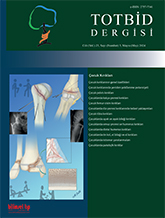
Fractures in children constitute a significant portion of pediatric traumas. The incidence of fractures varies according to gender and age groups. Although fracture healing has similar stages to adults, such as inflammation, repair and remodeling, it has some differences from adults. While it has advantages such as faster callus tissue formation and better tolerance of angulation and translation defects, growth plate (physis) injuries have an important place in pediatric fractures. Salter- Harris type II fracture is the most common type. Apart from growth plate (physis) injuries, torus fractures, plastic deformation, and greenstick fractures are also types of fractures specific to children. In addition, it is necessary to be careful in terms of abuse, especially in some fractures seen under one year of age. After skin trauma and bruising, the most common sign of abuse is fractures. While complications are similar to adults, physical hesitation is one of the points that should be taken into consideration. The prognosis varies depending on the degree of pause. In recurrent fractures, the most common cause has been shown to be early termination of immobilization, and open reduction is generally recommended. Reflex sympathetic dystrophy is more common in the lower extremities, unlike adults.